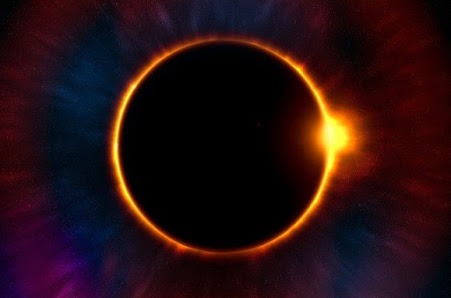What does the largest moon in the Solar System look like?
Jupiter's moon Ganymede which is larger than Mercury and Pluto has an icy surface speckled with bright young craters overlying a mixture of older, darker, and more cratered terrain laced with grooves and ridges.{tocify} $title={Table of Contents}
How big is our Universe?
If you look at the picture above, you will find a dot that is actually our Earth. The Milky Way is 1,00,000 light-years from one side to another. Compare our Earth with Milky Way. Milky Way is located in the Local Group which is 10 million light-years from one side to another. Here 54 Galaxies like Milky Way are found. Compare our Earth with Local Group. Virgo Supercluster is 110 million light-years from one side to another is the place where more than 100 Local Groups are located. Compare our Earth with Virgo Supercluster. Laniakea Supercluster is 520 million light-years from one side to another where 1,00,000 Local groups are found. Compare our Earth with Laniakea Supercluster. Laniakea Supercluster is also a small part of our Observable Universe, the part of the Universe human being have reached. And according to Cosmic Inflation Theory, the whole Universe is 150 sextillion times bigger than the Observable Universe.
$ads={1}
Why do Astronomers use different Radio Bands to observe the Universe?
Radio astronomers view the universe in several ranges of wavelengths we call bands. The VLA uses wavelengths ranging from 4 meters to less than a centimeter. The Atacama submillimeter Array uses radio bands ranging from a couple of centimeters to a third of a millimeter. But why do radio telescopes use such a wide range of wavelengths? The answer lies in the many ways that objects emit radio light, and how this light interacts with the gas and dust of interstellar space. Long radio wavelengths, such as those seen by the VLA’s Band 4 are typically produced by ionized gas. It lets us see where hot plasma is located in our galaxy. These long wavelengths are also useful because most neutral gas is transparent at these wavelengths. One of the most important of these is the 21-centimeter line. This wavelength is one of the best ways to observe the distribution of matter in a galaxy since hydrogen is by far the most abundant element in the universe.
What are those colorful rings around the Sun?
A corona is visible only to Earth observers in the right place at the right time. Rings like this will sometimes appear when the Sun or Moon is seen through thin clouds. The effect is created by the quantum mechanical diffraction of light around individual, similarly-sized water droplets in an intervening but mostly-transparent cloud. Since the light of different colors has different wavelengths, each color diffracts differently. Solar Coronae are one of the few quantum color effects that can be easily seen with the unaided eye.
What Is Happening Deep Beneath the Surface of Ice Planets?
Research shows that on water-ice planets between the size of our Earth and up to six times this size, water selectively leaches magnesium from typical rock minerals. The conditions with pressures of a hundred thousand atmospheres and temperatures above one thousand degrees Celsius were recreated in a lab and mimicked planets similarly, but smaller than Neptune and Uranus. The mechanisms of water-rock interaction at the Earth’s surface are well known, and the picture of the complex cycle of H2O in the deep interior of our and other terrestrial planets is constantly improving.
$ads={2}
Why is the Moon so dusty?
On the Moon, the history of constant micrometeorite bombardment has blasted away at the rocky surface creating a layer of powdery lunar soil or regolith. For the Apollo astronauts and their equipment, the pervasive, fine, gritty dust was definitely a problem. On the lunar surface in December 1972, Apollo 17 astronauts Harrison Schmitt and Eugene Cernan needed to repair one of their rover's fenders in an effort to keep the rooster tails of dust away from themselves and their gear. This picture reveals the wheel and fender of their dust-covered rover.
Did you know Jupiter has the biggest ocean on any planet!
Made of metallic hydrogen. Orbiting in cold space five times farther from the sun than Earth, Jupiter retained much higher levels of hydrogen and helium when it formed than did our planet. In fact, Jupiter is mostly hydrogen and helium. Given the planet’s mass and chemical composition, physics demands that way down under the cold cloud tops, pressures rise to the point that the hydrogen must turn to liquid. In fact, there should be a deep planetary ocean of liquid hydrogen.
